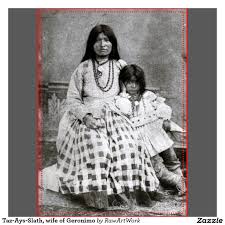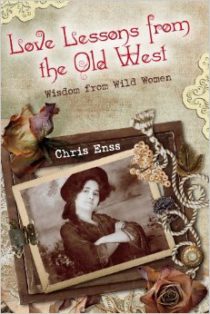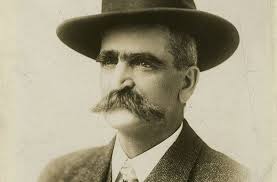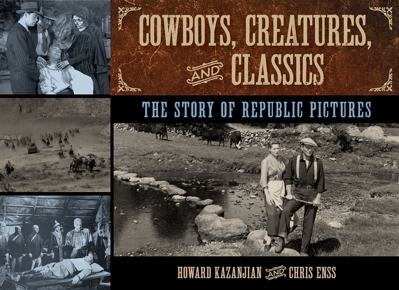1812 Wilson Hunt arrives at Astoria, Oregon. Having departed St. Louis more than two years earlier, Wilson Hunt and his party stumble into the fur-trading post of Astoria, Oregon.
Loving Geronimo
Enter now to win a copy of
Love Lessons from the Old West: Wisdom from Wild Women

Geronimo was a prominent leader of the Apache Indians. His battles against Mexico and Arizona for their expansion into Apache Tribal lands is well-known. What is not well-known is the deep love he had for his first wife, Alope. They had planned to spend a lifetime together but a senseless murder deprived Geronimo of his spouse. Her memory was all he had to keep him going. He would have other wives, but no one like Alope.
Geronimo was seventeen when he married Alope. He and his bride made their home near his mother Juanita’s wickiup near Clifton in southern Arizona. According to Geronimo, Alope was “slender and fair, loyal and dutiful.” The two had been lovers for a long time, and he considered marrying her to be the “greatest joy offered to him.” The pair wed in 1846 and resided in a wickiup made of buffalo hides. The interior of their home was filled with bear and lion robes, spears, bows, and arrows. Alope decorated their dwelling with beadwork and elaborate drawings made on buckskin. Her artistry extended onto the canvas walls of the wickiup as well.
Geronimo boasted in his autobiography entitled Geronimo, His Own Story, that Alope was a good wife. They followed the traditions of their forefathers and were very happy. During the first few years of their married life, Alope bore Geronimo three sons. “Children that played, loitered, and worked as I had done,” Geronimo later recalled of his family.
In 1858, Geronimo took his wife and sons and traveled from his camp with other Apache tribesmen and their families to Chihuahua to trade items for supplies that were needed. The journey from Janos into the Mexican state was something the Apache Indians did once a year. The tribe set up camp outside the town of Janos, and the men made the trip to the northern Mexico location to do business with general stores willing to trade with them. It was during one of the visits to Janos that the Apache encampment was attacked by Mexican troops who considered the Indians to be intruders in their territory. Many of the Apache women, children, and elderly were slaughtered and scalped. In addition to the murders of the defenseless Indians, Mexican soldiers seized all the supplies and weapons from the wickiups.5

To learn more about Geronimo and Alope read
Love Lessons from the Old West: Wisdom from Wild Women
This Day…
In Love with Kit Carson
Enter now to win a copy of
Love Lessons from the Old West: Wisdom from Wild Women

Maria Josefa Jaramillo was fifteen when she married well-known frontiersman Kit Carson on February 3, 1843. The thirty-three year old Carson made Maria’s stomach flutter with excitement. He was fearless and decent and in him she saw forever.
Maria Josefa was born on March 19, 1828, in Santa Fe, New Mexico. Her father, Francisco Jaramillo, was a merchant, and her mother, Maria Apolonia Vigil, owned substantial acreage in the Rio Grande area of the state. Maria Josefa helped her parents maintain their ranch and cared for her younger brothers and sisters. She met Carson in Taos in 1842. He had been on an expedition with Colonel John Charles Fremont in the Rocky Mountains and was anxious to visit a place where there were lots of people.
Although Maria Josefa and Carson were equally impressed with one another, her father would not permit them to marry because Carson was illiterate. Francisco was an educated man and very well respected in the community. He was aware of Carson’s work as an accomplished scout, criss crossing the western territories, but preferred his daughter marry someone with a scholastic background, at the very least someone who was a member of the Catholic faith. Carson was determined to make Maria Josefa his wife and decided to convert to Catholicism. He attended the necessary classes, counseled with a priest, and paid the fee required for a wedding ceremony in the church.
A short three months after the wedding, Carson left on the first of many expeditions he would participate in during his married life. Carson had been leading treks to various parts of the unsettled frontier since he was fifteen years old. He was born in Madison County, Kentucky, on December 24, 1809. Just after his first birthday his parents moved to Howard County, Missouri. Carson had five brothers and six sisters. His father was a lumberjack and died in a work related accident when Carson was nine years old. At the age of fourteen he was an apprentice to a saddle maker, a job which he said “soon became irksome to him.” He ran away (a one cent reward was offered for his return) and arrived in Santa Fe in the fall of 1826.
To learn more about Kit Carson and his wife Maria read
Love Lessons from the Old West: Wisdom from Wild Women.
This Day…
Love & the Lawman
Enter now to win a copy of
Love Lessons from the Old West: Wisdom from Wild Women

Western author Zoe Tilghman’s source of inspiration was her husband lawman, Bill Tilghman. He was, according to his friend and one time fellow lawman Bat Masterson, “the best of all of us.” Bat was referring to all the lawmen in the west. Zoe didn’t disagree.
Born on November 15, 1880, in Kansas, Zoe Agnes Stratton was twenty-three when she married Bill. He was more than twenty years older than she, but he suited the school teacher turned author perfectly. “He was a Christian gentleman,” Zoe told reporters at the Ada Evening News on April 16, 1960. “He was quiet, kindly, greatly respected, and loved.”
Born on the fourth of July 1854 to an army soldier turned farmer and a young homemaker, Bill spent his early childhood in the heart of Sioux Indian territory in Minnesota. Grazed by an arrow when he was a baby, he was raised to respect Native Americans and protect his family from tribes that felt they had been unfairly treated by the government. Bill was one of six children. His mother insisted he had been “born to a life of danger.”
In 1859 his family moved to a homestead near Atkinson, Kansas. While Bill’s father and oldest brother were off fighting in the Civil War, he worked the farm and hunted game. One of the most significant events in his life occurred when he was twelve years old while returning home from a blackberry hunt. His hero, Marshal Bill Hickok (Wild Bill), rode up beside him and asked if he had seen a man ride through with a team of mules and a wagon.
The wagon and mules had been stolen in Abilene, and the marshal had pursued the culprit across four hundred miles. Bill told Hickok that the thief had passed him on the road that led to Atkinson. The marshal caught the criminal before he left the area and escorted him back to the scene of the crime. Bill was so taken by Hickok’s passion for upholding the law he decided to follow in his footsteps and become a scout and lawman.

To learn more about Bill Tilghman and his wife Zoe read
Love Lessons from the Old West: Wisdom from Wild Women
Cowboys, Creatures, and Classics

Take one well-oiled effective killing machine, add a familiar hero on the ground, in the air, and on horseback; stir in a ghastly end that’s surely impossible to escape, add action, add passion, made on a shoestring budget at breakneck speed, and you’ve got the recipe for Republic Pictures. Who, after all, cannot forget The Atomic Kid, starring Mickey Rooney, or The Untamed Heiress, with an un-Oscar-worthy performance by ingénue Judy Canova?
Exploding onto the movie scene in 1935, Republic Pictures brought the pop culture of the 30s and 40s to neighborhood movie houses. Week after week kids sank into their matinee seats to soak up the Golden Age of the Republic series, to ride off into the classic American West. And they gave us visions of the future. Visions that inspire film makers today. Republic was a studio that dollar for dollar packed more movie onto the screen than the majors could believe. From sunrise on into the night over grueling six day weeks, no matter how much mayhem movie makers were called upon to produce, at Republic Pictures it was all in a day’s work.
Republic Pictures was the little studio in the San Fernando Valley where movies were made family style. A core of technicians, directors, and actors worked hard at their craft as Republic released a staggering total of more than a thousand films through the late 1950s.
Republic Pictures was home to John Wayne for thirty-three films. Always inventing, Republic brought a song to the West. It featured the West’s first singing cowboy. Republic brought action, adventure, and escape to neighborhood movies houses across America. And they brought it with style. Scene from westerns such as The Three Mesquiteers and the Lawless Range gave screaming kids at the bijou a white-knuckle display of expert film making.
Republic Pictures became a studio where major directors could bring their personal vision to the screen. Sometimes these were projects no other studio would touch such as The Quiet Man (which brought director John Ford an Oscar) and Macbeth.
Killer Bs, Cowboys, Creatures and Classics: The Story of Republic Pictures is for anyone who likes B movies magic. It is the honest account of an extraordinary production house, one whose ability to turn out films quickly boded well for its transition into television production. Not only were its sets used for such shows as Leave it to Beaver and Gilligan’s Island, stock footage from Republic’s movies was used on such shows as Gunsmoke and The Life and Legend of Wyatt Earp.
This Day…
Wanted: A Gentlemen of Honor
Enter to win a copy of two books about mail order brides of the Old West.
The titles you can win are Hearts West: True Stories of Mail Order Brides on the Frontier and
Object Matrimony: The Risky Business of Mail Order Match Making on the Western Frontier.

In the early days of westward travel, when men and women left behind their homes and acquaintances in search of wealth and happiness, there was a recognized need for some method of honorable introduction between the sexes. The need was readily fulfilled by the formation of a periodical devoted entirely to the advancement of marriage.
Throughout the 1870s, 80s and 90s, that periodical, to which many unattached men and women subscribed, was a newspaper called Matrimonial News. Here’s a sample of one of the advertisements that appeared in the publication:
No, 228 – If there is a gentlemen of honor and intelligence between the age of 35 and 50 who wants a genuine housekeeper, let him write to this number. I am a widow, 34 years old, weight 110 pounds, 4 feet and 5 inches in height: am brunette and have very fine black hair.

To learn more about mail order brides and the advertisements they placed in various publications read Hearts West: True Stories of Mail Order Brides on the Frontier and
Object Matrimony: The Risky Business of Mail Order Match Making on the Western Frontier.To
This Day…
1875 Pinkertons maim Frank and Jesse James’ mother . Mistakenly believing Frank and Jesse James are hiding out at their family home, a gang of men–likely led by Pinkerton detectives–mount a raid that leaves the outlaws’ mother permanently maimed and their nine-year-old half-brother dead.

